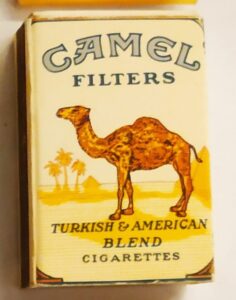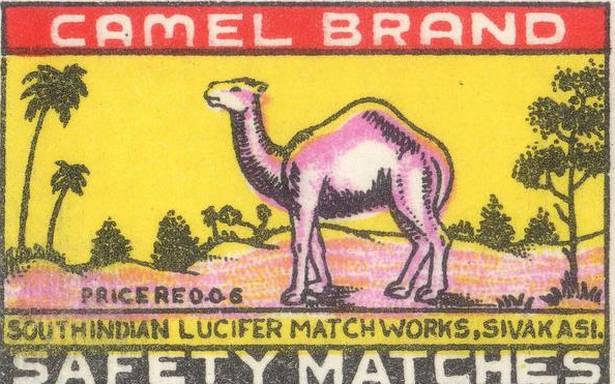

 The Matchesmuseum’s matchbox collection has hundreds of promotional matchboxes from various tobacco companies. Matchboxes from more than 120 different brands of cigarettes that circulated in the past or are still circulating today.
The Matchesmuseum’s matchbox collection has hundreds of promotional matchboxes from various tobacco companies. Matchboxes from more than 120 different brands of cigarettes that circulated in the past or are still circulating today.
Camel matchboxes have a special place because of the originality of its advertising campaign, but also because it was a cigarette with history, legends and many friends. The trademark is the characteristic package with the camel “model” proud and arrogant in front of the pyramids of Egypt.
Its history begins in 1913 in America in a saturated market of dozens of brands and competitors that made tobacco and cigarettes for “twisting”. The demonic American businessman Richard Reynolds had to find something special, recognizable, attractive, qualitative that attracts the smoker and the non-smoker at first glance. So he decided to create not tobacco or cigarettes, but the first ready-made industrial package with cigarettes in the American market, “CAMEL”
 Reynolds sought a short name to draw attention to and refer to Turkey, as well as a logo in bright yellow to “knock on the door” of the majority illiterate population. Finally he chose “Camel”.
Reynolds sought a short name to draw attention to and refer to Turkey, as well as a logo in bright yellow to “knock on the door” of the majority illiterate population. Finally he chose “Camel”.
Before the release of the well-known CAMEL package, an entry with implication appeared in the newspapers, without the reader knowing which product it was. His motto, “Camels are coming”. The next advertisement stressed: “Tomorrow in your city will be more camels than in all of Arabia”. Then came the famous pack of cigarettes on the market.

 At first, of course, none of the company knew if what was depicted on the package was really a camel, since they had never seen such an animal. Luckily for them, a touring circus was in the area at the time, so Reynolds sent a photographer to capture a nice camel, which the workers shouted Old Joe. Old Joe, however, did not want to play the role of model. He started shaking his head and tail, stretched his ears backwards, closed his eyes, and moved menacingly towards the photographer. However, this particular photo had to be reproduced millions of times.
At first, of course, none of the company knew if what was depicted on the package was really a camel, since they had never seen such an animal. Luckily for them, a touring circus was in the area at the time, so Reynolds sent a photographer to capture a nice camel, which the workers shouted Old Joe. Old Joe, however, did not want to play the role of model. He started shaking his head and tail, stretched his ears backwards, closed his eyes, and moved menacingly towards the photographer. However, this particular photo had to be reproduced millions of times.

 The new cigarette was promoted throughout America, while with the outbreak of World War I accompanied the soldiers fighting in France. Something similar happened after World War II, when well-known athletes and doctors promoted it to the general public. Of course, at that time few people knew about the harmful effects of smoking, which was often promoted as beneficial for the nerves and health.
The new cigarette was promoted throughout America, while with the outbreak of World War I accompanied the soldiers fighting in France. Something similar happened after World War II, when well-known athletes and doctors promoted it to the general public. Of course, at that time few people knew about the harmful effects of smoking, which was often promoted as beneficial for the nerves and health.

